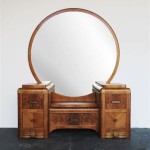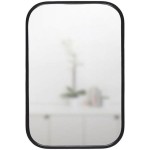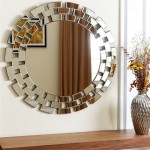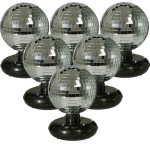How To Get Scratches Out Of Acrylic Mirror
Acrylic mirrors offer a lightweight and shatter-resistant alternative to traditional glass mirrors. However, their softer surface makes them more susceptible to scratches. Fortunately, minor scratches can often be removed with readily available materials and a bit of patience. This article outlines effective methods for removing scratches from acrylic mirrors, restoring their clarity and reflectivity.
Assessing the Scratch
Before attempting any repair, it is crucial to assess the depth of the scratch. Run a fingernail gently across the scratch. If the nail catches, the scratch is likely too deep for simple repair and may require professional resurfacing or replacement. Superficial scratches, where the fingernail glides smoothly, are typically amenable to DIY repair methods.
Determining the depth helps choose the appropriate repair technique. Shallow scratches may respond well to gentle polishing, while deeper scratches may require a filling approach before polishing. Misjudging the scratch depth can worsen the damage, making professional repair more difficult and costly.
Cleaning the Acrylic Surface
Regardless of the scratch depth, cleaning the acrylic surface is the essential first step. Use a soft, lint-free microfiber cloth and a mild soap solution (dish soap diluted in water). Gently wipe the entire surface to remove dust, fingerprints, and other debris. Avoid abrasive cleaners or scrubbing pads as these can create more scratches.
Thorough cleaning prevents further scratching during the repair process. Embedded dirt particles can act like abrasives, exacerbating existing scratches when polishing or filling. Cleanliness also ensures the repair materials adhere properly to the acrylic surface, maximizing their effectiveness.
Repairing Minor Scratches with Polishing Compound
For minor scratches, a plastic polishing compound can be highly effective. Apply a small amount of the compound to the scratched area and use a soft, lint-free cloth to buff the surface in circular motions. Apply gentle pressure and continue buffing until the scratch disappears. This method works by leveling the microscopic peaks and valleys created by the scratch, restoring the smooth surface and reflectivity.
Selecting the appropriate polishing compound is important. Compounds specifically designed for plastics are recommended to avoid further damage. Automotive polishing compounds, often available in different grits, can be suitable. Start with the finest grit and progress to coarser grits only if necessary, as coarser grits can create a hazy finish if used excessively.
Repairing Deeper Scratches with Acrylic Scratch Filler
Deeper scratches require filling before polishing. Acrylic scratch fillers, specifically designed for this purpose, are available in various forms, including pastes and liquids. Apply the filler to the scratch following the manufacturer's instructions. Typically, this involves filling the scratch slightly above the surface, allowing it to dry completely, and then sanding it down level with the surrounding area using very fine-grit sandpaper.
Once the filler is dry and level, use a polishing compound as described above to restore the shine and blend the repaired area seamlessly with the rest of the mirror surface. Using a filler followed by polishing ensures a smooth, even finish, effectively hiding the deeper scratch and restoring the mirror's reflectivity.
Protecting the Repaired Surface
After successfully removing scratches, protecting the acrylic mirror from future damage is essential. Applying a protective acrylic sealant can create a barrier against minor scratches and abrasions. Regular cleaning with a microfiber cloth and mild soap solution will help maintain the mirror's clarity and prevent dirt buildup that could lead to scratching.
Avoid using harsh chemicals or abrasive cleaners on the repaired surface. Handle the mirror carefully and avoid placing heavy or sharp objects directly on its surface. By implementing these protective measures, the lifespan of the acrylic mirror can be extended, preserving its appearance and functionality.

How To Remove Scratches From Acrylic

Acrylic Scratch Remover

How To Remove Scratches From Acrylic Sheet Or Plexiglass

How To Clean An Acrylic Mirror Cut My

3 Easy Ways To Remove Plexiglass Scratches Wikihow

How To Remove Scratches From Plexiglass Acrylic Acme Plastics

How To Clean Acrylic Mirrors Without Scratching Them

How To Remove Scratches From Acrylic Sheet Or Plexiglass

Do You Have An Acrylic Mirror That Is In Need Of A Clean Here At Sheet Plastics We Compiled Guide How To This Properly And Effectively

How To Removing Scratches From Acrylic Sheets








